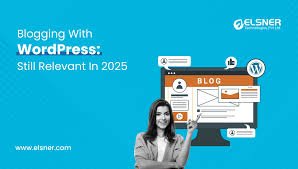In today’s digital world, starting a blog can be an exciting and rewarding endeavor. Whether you’re looking to share your passion, build a personal brand, or even make money online, blogging offers endless opportunities. However, if you’re new to blogging, it can be challenging to know where to begin.
In this guide, we’ll walk you through the essential steps to start your first blog in 2025. From choosing a niche to selecting the right platform and writing your first post, this comprehensive guide will equip you with the knowledge you need to succeed as a blogger.
Step 1: Choose Your Niche
The first and most important step in starting a blog is selecting your niche. Your niche is the specific area or topic that your blog will focus on, and it plays a crucial role in shaping your content, audience, and success.
When choosing your niche, consider these factors:
- Passion and Expertise: Pick a topic that excites you. If you’re passionate about the subject, you’ll find it easier to create content consistently and engage with your audience. Moreover, having some expertise or a willingness to learn will make your content more valuable to readers.
- Audience Demand: Research whether there’s a demand for the niche you’re considering. Use tools like Google Trends, Ubersuggest, or Answer the Public to check search volumes and identify the interests of potential readers.
- Monetization Potential: If your goal is to monetize your blog, make sure your niche offers opportunities for affiliate marketing, sponsored content, or product sales. Niches like personal finance, lifestyle, and health often provide monetization opportunities.
Some popular blog niches for 2025 include technology, finance, travel, wellness, and personal development. But remember, you don’t have to choose a broad niche. You can always opt for a sub-niche that targets a specific audience.
Step 2: Choose a Blogging Platform
Once you’ve decided on a niche, it’s time to choose a blogging platform. A blogging platform is where your blog will live online, and there are several options to consider. Here are three of the most popular blogging platforms for beginners:
- WordPress.org: WordPress is the most flexible and widely-used blogging platform. It offers full control over customization and scalability, which is ideal for bloggers who want to grow their websites in the future. WordPress.org is self-hosted, meaning you’ll need to purchase hosting and a domain name, but it provides ultimate control over your blog’s functionality and design.
- Wix: If you’re looking for an easy, drag-and-drop website builder, Wix is an excellent choice. It’s simple to set up and doesn’t require any technical knowledge. Wix is a hosted solution, meaning you won’t need to worry about managing hosting or servers.
- Squarespace: Squarespace is another all-in-one platform that offers beautifully designed templates and easy customization. It’s ideal for beginners who want to create a professional-looking blog without much hassle. Like Wix, Squarespace is a hosted solution.
For beginners who plan to grow their blog over time, WordPress.org is often the best choice due to its flexibility and scalability. However, Wix and Squarespace are also solid options for those looking for simplicity.

Step 3: Pick a Domain Name and Hosting
Your domain name is your blog’s online address, and it plays an essential role in your branding and visibility. When choosing a domain name, keep it simple, memorable, and relevant to your niche. For example, if your blog focuses on cooking, something like “DeliciouslySimpleRecipes.com” might work well.
Once you’ve selected your domain name, you’ll need to purchase web hosting. For WordPress blogs, hosting providers like Bluehost, SiteGround, and WP Engine are popular choices. These hosting services often offer one-click WordPress installation, making the setup process easy for beginners.
Step 4: Install WordPress and Choose a Theme
After purchasing hosting, you’ll need to install WordPress. Most hosting providers offer easy one-click installation, so this process is quick and straightforward.
Once WordPress is installed, it’s time to choose a theme. Your theme dictates the look and layout of your blog. There are thousands of free and premium themes available, so take your time to pick one that reflects your blog’s style and goals.
Some tips for choosing a theme:
- Mobile-Friendly: Make sure the theme is responsive and looks good on mobile devices, as a large portion of blog traffic comes from smartphones.
- Customization Options: Choose a theme that allows for customization to ensure your blog has a unique look.
- Fast Loading Time: A fast-loading theme is important for user experience and SEO.

Step 5: Create High-Quality Content
The heart of any blog is the content you create. To attract and engage readers, your blog posts must provide value and solve problems for your audience.
Here are some tips to create great blog content:
- Write Engaging Headlines: Your blog post titles should be catchy and include keywords that your audience is likely to search for.
- Focus on Quality Over Quantity: It’s better to post fewer high-quality articles than to churn out low-quality posts. Make sure each post provides value to your readers.
- Use Visuals: Incorporate images, videos, or infographics to make your content more engaging and shareable.
- Optimize for SEO: To ensure your posts are found by search engines, optimize your content with relevant keywords, internal links, and meta descriptions.
Use tools like Grammarly to check for spelling and grammar mistakes and Hemingway Editor to improve readability.
Step 6: Promote Your Blog
Once you’ve written some great blog posts, you’ll need to promote them to attract readers. Here are a few ways to get your content noticed:
- Social Media: Share your blog posts on platforms like Instagram, Twitter, Facebook, and Pinterest to increase visibility.
- Email Marketing: Build an email list and offer incentives like free resources or exclusive content to encourage readers to subscribe.
- Guest Posting: Write guest posts for other blogs in your niche. This allows you to reach new audiences and gain backlinks to improve SEO.

Step 7: Monetize Your Blog
Once you’ve gained some traffic and built a loyal audience, you can start monetizing your blog. Here are some common ways to make money from blogging:
- Affiliate Marketing: Promote products or services related to your niche and earn a commission on any sales made through your affiliate links.
- Sponsored Content: Brands might pay you to write posts that promote their products or services.
- Selling Digital Products: If you have expertise in your niche, you can create and sell eBooks, courses, or digital tools.
Conclusion
Starting a blog in 2025 is an exciting venture that can open doors to endless opportunities. By following these essential steps—choosing a niche, selecting the right platform, and consistently creating high-quality content—you’ll be on your way to building a successful blog that not only attracts readers but also helps you achieve your goals.
Related Tags:
- How to Start a Blog
- Blogging for Beginners
- Blog Tips and Tricks
- Blogging in 2025
- SEO for Bloggers
- WordPress for Beginners
- How to Monetize a Blog
- Content Creation for Blogs
- Social Media for Bloggers
- Blog Promotion Tips
Feel free to let me know if you need any adjustments!













